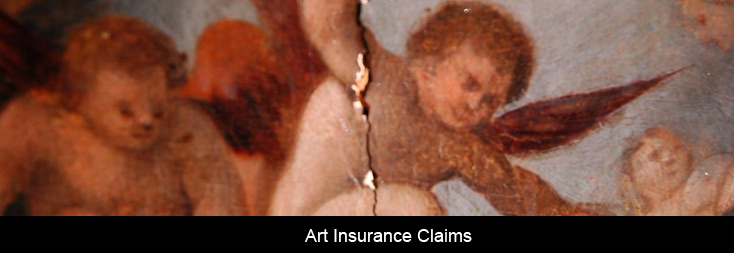Ombudsman ruling emphasizes the need for specialist art insurance
Are you comfortable with the insurance cover for your valuable works of art? Do you know what the terms and conditions of your art insurance policy stipulate and will you be covered against any possible peril?
The recent ruling by the Ombudsman for Short Term Insurance in favour of an insurer described in their annual newsletter reflects the need for owners of art and collectibles to buy specialist cover.
A newsletter from Artinsure to clients provides an ominous warning to the owners of art who believe that their works of art are always insured after they have specified them in a comprehensive household insurance policy…I would like to share some insights from this circular:
As a specialist insurer our products are tailored to understand the collectors’ needs and are interpreted in such a way. The circumstances described in the Ombudsman case illustrate the difficulty encountered when using a general insurance policy to insure specialist assets such as art work.
Example of the over-eager Mr Min cleaner:
“The insured employed a domestic worker and furnished her with a product known as “Mr Min” and instructed her to clean the household using this product. The precise terms of the instructions given to the domestic worker were in dispute but the insured’s domestic worker was entrusted with the general task of cleaning objects situated in the insured’s residence with the assistance of “Mr Min”. The insured owned a large number of artworks. In the course of cleaning, the domestic worker applied Mr Min to an oil painting owned by the insured which caused extensive damage to the painting itself.
The Art Insurance claim, liability and intentional or negligent damage
The insured filed a claim against his insurer for the loss of the artwork but the insurer rejected liability relying upon an exclusion in the policy exempting the insurer from liability for “loss of or damage to the insured property caused by …… any process of cleaning, dying, bleaching, altering, repairing or renovating”.
The insured contended that the loss arose not from an act of cleaning but accidentally. When the matter could not be resolved with the insurer, the insured filed a complaint with the Ombudsman.
Ruling by the Ombudsman on the Terms and Conditions of the Art Insurance Policy
The Ombudsman, after viewing the available facts and specific terms of the policy found that there was no evidence that the domestic worker had applied Mr Min to the artwork accidentally; on the contrary, the product in question, which on its container was described as being suitable for use on “painted surfaces” was deliberately applied to the artwork by the domestic worker with the intention on her part of cleaning the artwork by this process.
The Ombudsman was of the view that the terms of the exclusion relied upon by the insurer were clear and unambiguous in their meaning. Of particular significance was the use of the word “any” in the exclusionary clause and it appeared that the intention of the parties was that the insurer would not be liable for loss arising from any of the excluded perils which included “any process of cleaning”.
The reason why the product in question had been applied to the artwork was clearly the anticipation on the part of the domestic worker that the artwork would, in the process, be cleaned. The exclusion contained in the policy had to be interpreted against the background of the cover provided by the policy as a whole. The cover provided by the indemnity clause was clearly restricted to loss or damage arising from accidental physical means and in this context the damage must be unintended, unexpected and accidental. The act of cleaning the artwork with Mr Min was clearly an intentional and not an accidental act and the exclusion relied upon by the insurer was wide enough in its ambit to encompass any loss or damage arising directly or indirectly from any process of cleaning.
Importance of Exclusions in the Art Insurance Policy
The purpose of these exclusions appears to the Ombudsman to have been to exclude liability on the part of the insurer for loss or damage which arose from human intervention with the artwork itself. In the circumstances the Ombudsman found that the insurer had discharged the onus of establishing that the loss fell within the ambit of the exclusion relied upon and the insurer’s rejection of liability was upheld.”
Collectors are aware of the manner in which their collections should be handled and in understanding the behaviour of a collector it is clear to us that such an act would not be intentional.
[Info with acknowledgement to Artinsure]
[More on Artinsure: Artinsure’s collector policy would insure such an event as it would not be interpreted as an intentional act by the owner of the art and therefore deemed accidental. Artinsure has never had a claims complaint or Ombudsman case. This is a reflection of our understanding and interpretation of the collectors’ needs.]




